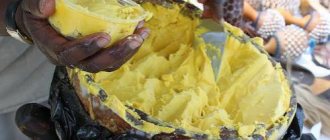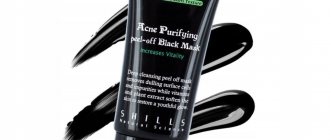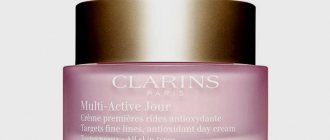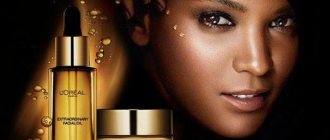To ensure that your face retains freshness and a healthy glow for many years, you can use natural preparations to care for it. Virgin vegetable oils are an excellent alternative to store-bought creams, lotions and tonics. They can be used not only to moisturize and nourish the skin, but also to effectively cleanse it.
There is a traditional way to cleanse and remove makeup using face oil at home. In this case, the oil product is applied to a damp cotton pad and rubbed over the face along the massage lines in the evenings. But there is a more effective way - cleansing the face with oil to get rid of acne, comedones, moisturize, protect and soften the skin of the face and neck, especially in the cold season.
Oil Cleansing Facial: Pros and Cons of the Oil Cleansing Method
This procedure is quite popular due to its simplicity, accessibility and excellent cleansing effect. The first to try this method were the Japanese, after which Europeans also appreciated all the benefits of cleansing their faces with oil.
Before you apply this method on yourself, it’s still a good idea to learn about all its pros and cons:
Benefits of using facial cleansing oils:
- Naturalness. Vegetable oils are used without adding flavors, preservatives and surfactants.
- The procedure is equally useful for any type of epidermis: normal, combination, oily, dry or age-related. It is recommended to use oil to cleanse the face for problems such as pimples, acne, inflammation, pigmentation, dryness, flaking, etc.
- The method is good for cleansing your face every day and for removing makeup at home (suitable even for long-lasting cosmetics).
- The procedure does not harm the natural lipid layer of the skin and does not cause a feeling of tightness. In addition, it helps to tighten the oval of the face, improve blood circulation and produce its own collagen.
- By systematically cleansing your face with oil, you can achieve a rejuvenating effect, make your skin more hydrated and elastic, and your complexion more even.
Possible inconveniences from using oils to cleanse the face:
- The skin will not immediately be able to get used to such cleansing. Often at first you can observe the appearance of acne, redness and oily sheen. The adaptation period takes approximately 7-10 days, after which waste and toxins are removed.
- Time factor. Cleansing with industrially produced gels and foams usually takes less time than cleansing the facial skin with natural oils.
- Consumables. Towels and napkins that must be washed after each procedure.
Cleansing the skin with oil - advantages and disadvantages
What is good about this kind of cleansing?
- It is suitable for all skin types, oil cleansing is suitable for acne-prone skin, the skin gets rid of dryness and gains radiance and shine.
- In addition to cleansing the skin, the oil mixture can be used to remove makeup.
- With this cleansing, we do not deprive our skin of its own protective layer.
What inconvenience does cleansing our skin with oil bring us?
- The skin will not immediately get used to such a procedure.
- It will take a little longer to cleanse.
- Towels will need to be changed more often as oil does not help them last long.
Oil cleansing: how does it work?
Until now, this fairly popular and effective method causes mistrust. But the main idea is that one oil (or vegetable fat) should dissolve another fat (skin fat, which accumulates on the face).
Natural oil that cleanses the skin of the face, penetrates the pores and dissolves the dirt, sebum, and cosmetics accumulated in them. After which, opening the pores makes it possible to easily remove all this unpleasant mixture. And in order to provide the epidermis with the nutrition and protection it needs, you can use an additional couple of drops of the oil product.
Natural plant extracts contain vitamins, minerals and fatty acids, which not only cleanse the skin, but also nourish, soften, rejuvenate, maintain its health, without causing acne and inflammation.
Why does skin dry out in winter?
Our skin type does not change throughout life, its condition changes for various reasons, but it is in winter that any skin dries out more than ever. Why? On the street, exposed areas of skin face the test of cold. Due to low temperatures, the work of the sebaceous glands slows down. Even if there is no severe frost, dry skin can be caused by strong winds, so the skin first of all needs protection from frost and sun, wind and snow, and sometimes from all at once.
To avoid dryness and frostbite on your facial skin in winter, lubricate it with oil 30 minutes before going outside. The most useful winter products for protecting facial skin are fatty oils with a high content of palmitic acid.
Reference: palmitic acid makes up 37% of the fatty acids in our skin and forms a thin, breathable protective film on it. With age, the content of palmitic fatty acid in the stratum corneum of the skin decreases, its protective barrier is broken, holes are formed through which life-giving moisture quickly leaves and villains - microbes - penetrate.
At any time of the year, the skin needs only one thing - to compensate for the lack of fatty acids from the inside or outside and restore functions. Therefore, oils rich in palmitic acid are the best natural protective agents for winter skin care.
Winter face oils high in palmitic acid
- green coffee oil (Cofea Arabica) – 38%
- Avocado oil (Persea Gratissima) – 19%
- wheat germ oil (Triticum Vulgare L.) -18%
- argan oil (Argania Spinosa) – 16%
DO NOT use creams with film-forming substances that contain petroleum products such as mineral oils, paraffin and petroleum jelly to protect your skin in winter. During the use of such products, the pores of the skin quickly become clogged under the influence of temperature changes and oxygen ceases to flow to the epidermal cells.
Choosing an oil for cleansing your face
Oil cleansing compositions usually consist of 2 parts:
- cleansing oil - usually castor oil (sometimes hazelnut);
- nourishing – olive, macadamia, avocado, borage, jojoba, etc.
Castor oil has a thick texture, so most often a mixture of two or more oils is used for washing and cleansing. So, for example, if you use the most accessible and simple olive oil as a nutrient, then:
- for an oily type of epidermis, you need more castor oil for cleansing and less olive oil for nutrition, that is, 75% castor oil and 25% olive;
- and for dry, on the contrary, you need more nutrition, that is, 75% olive and 25% castor oil.
Olive extract has a large amount of antioxidants in its composition, and castor extract is excellent for healing, cleansing, and whitening the skin. In addition, castor oil is good at drawing out dirt from skin pores and is low comedogenic.
For information
It is important to remember that castor oil cannot be used in its pure form, so as not to dry out the epidermis. The usual proportion is: 1/3 nourishing oil to 2/3 castor oil.
Oil mixtures depending on skin type
In order to find out what is the best way to cleanse your face every day, you will have to use trial and error to find out which oil product and in what proportion are suitable for a specific type of epidermis. To make the choice easier, there are some starting points depending on your skin type, like this:
- For oily types, you need 1/3 nourishing and 2/3 cleansing oil.
- Under normal conditions, this ratio will be 1:1.
- For dry skin, the ideal proportion would be: 1/3 cleanser and 2/3 nourishing oil (but for overly dry skin, it is better to add a very small amount of cleansing oil to the mixture).
Further, while there is no clarity with the composition and proportion, you can mix a small amount of oil extracts, for example, a teaspoon of one and the other. Subsequently, when you understand what a specific skin type needs, these ratios can be changed, adding, for example, more nutrients in the cold season or in windy weather.
In addition, in oil mixtures for cleansing, it is permissible to use esters as additives, which are also suitable for the type of epidermis:
- lemon, bergamot, orange - for normal;
- rosemary, tea tree, fir and lavender - for oily;
- rose and neroli - for dry;
- geranium, sandalwood, incense, fennel, myrrh and patchouli - for aging skin.
Specially selected mixtures for eliminating various problems with the epidermis are considered especially effective:
- For the treatment of pimples, inflammation and acne: castor oil + flax + almond + jojoba.
- Regulating the functioning of the sebaceous glands, getting rid of flaking: sesame seeds + sunflower + corn.
- To eliminate skin tightness and flaking: cocoa + wheat germ + grape seeds + walnuts.
- Anti-aging effect, anti-wrinkle, tightening: apricot kernels + avocado + argan.
Nourishing oils for facial cleansing
Depending on the properties and type of skin, which oil cleanses and nourishes the skin?
- Oily and problematic: jojoba, grape, sweet almond.
- Dry and fading: avocado, apricot and argan.
- All types, universal: almond, grapeseed, sunflower, tamanu, apricot, olive and jojoba.
It is worth considering that if the skin is prone to clogged pores and the formation of comedones (blackheads), then in this case it is better to use oil extracts that have a low degree of comedogenicity (sunflower, shea butter, hemp, black cumin). Rosehip, almond, apricot and grape seed oils, and castor oil are slightly more comedogenic. But you should be more careful with the squeezes of flax seeds, coconuts and wheat germ - they have the highest threshold for their ability to clog pores.
Advice
But the surest way is to observe the reaction of your own skin and, if the oil product is not suitable, simply change it to another.
Sometimes such a reaction can occur to castor oil; in some people it can cause drying of the epidermis. In this case, you can try replacing castor oil with:
- sunflower or hazelnut – for problem types prone to acne;
- grape or almond – for normal and fatty types;
- peach or jojoba - for epidermis prone to dryness;
- apricot and avocado - for very dry skin.
If the cleansing mixture causes redness, this may indicate an allergic reaction to one of the oil products included in the composition. Typically, oils from nuts (macadamia, hazelnut, almond, etc.) have allergenic properties. When faced with such a problem, next time you can try replacing this type of oil products with extracts of grape or apricot seeds or sunflower.
On a note
If you are prone to allergies, it is worth remembering that the greater the number of oil extracts a mixture contains, the more difficult it is to calculate which of them caused a negative reaction.
Removing stubborn makeup (eyes and face)
Try making your own makeup remover with a natural composition. Take light bases (for example, rice and jojoba), hydrolat cornflower or rose water, cotton pads. Wet it with dischydrol and apply oil to it. Gently apply the disc to your closed eyelids, lips or face (depending on where you are removing makeup) for a minute to allow the makeup to begin to dissolve. Carefully, without stretching the skin, remove the disc. Take a new one and repeat the algorithm until the cosmetics are completely dissolved. This method is effective for removing stubborn mascara, lipstick, and heavy foundation. Finish removing makeup with a foaming cleanser (if necessary) and wiping with floral water (to further remove residue). Then apply skincare cream. You can do without hydrosol and moisten the disc with hot water. This enhances the solvent properties of the oil (depending on temperature). But there are no beneficial properties of hydrolates.
Oil cleansing procedure
General recommendations for carrying out the procedure are given below, but it must be taken into account that each person is unique and it may happen that over time they will develop their own methodology for conducting cleansing sessions with natural remedies. It is better to cleanse your face with oil in the evening.
- Apply a mixture of two or more oils to a dry face over makeup, massage in circular motions for 1-2 minutes to allow the oil to begin to work. Leave it to act for another 30 seconds.
- Soak a terry towel or napkin in hot (not scalding) water and place it on your face to create a steam effect and open the pores. After 10-30 seconds, repeat the procedure, wringing and rinsing the napkin in water 2-3 times.
- Rinse the towel one last time in hot water and wring it out to remove any remaining oil and dirt from your face. Some people use boiled water for this.
- Spray cool water on your face to close your pores. If you feel the need, you can apply your usual cream.
- If after the session you feel dryness and tightness of the epidermis, you should reduce the amount of cleansing oil in the wash mixture. In addition, to get rid of dryness, it’s a good idea to apply a few drops of the oil mixture to your fingertips, warm it up, rub it between your palms and massage it into damp skin. Perform a light massage until the oil film disappears.
- In the morning, just wash your face with clean warm water or pat your face with a warm, damp cloth.
Important!
This method of cleansing the face with oil may not be suitable for very sensitive skin, and manipulation with a hot towel is contraindicated for rosacea (vascular network).
Washing procedures with oil preparations should be carried out no more than 1-2 times per week. and use moisturizers. Oils do not contain water, so it is easy to dry out the skin by overusing such procedures.
For pigmentation and scars
You can use castor oil on your face for age spots and scars. By softening the skin and enhancing subcutaneous microcirculation, tissue renewal and healing are accelerated, the skin whitens and becomes cleaner.
How to use
The oil is applied pointwise. Use your fingers or a cotton swab to avoid touching healthy skin. To lighten pigmentation, freckles or scars, it should be kept for 10-15 minutes. Then rinse with water or cosmetic lotion.
For the effect to become noticeable, you need to perform this procedure regularly: once or twice a day for a month.
In this case, it is necessary to wash off the mask - if you leave the substance on the skin, it will clog the pores. Less oxygen will enter the skin, the water-salt balance will be disrupted, and the scar tissue may turn red or irritate.
Masks with castor oil for the face not only rejuvenate and refresh the skin, but also heal. For example, the composition of Vishnevsky’s famous medicinal ointment includes castor oil. The product has become widespread due to its strong disinfectant and anti-inflammatory properties.
Video on the topic Castor face mask from Mila Mishina
Recommendations and important notes about the oil washing method
Each person is unique, so it is impossible to say for sure how many times a week to do oil cleansing: for some, a couple of times every seven days is enough, but for others, there is a need to carry out the procedures daily. If you begin to feel unusual dryness of the skin, then the sessions are carried out too often.
- It is necessary to take into account that the skin requires adaptation (about a couple of weeks); there is no need to use gels, foams, or industrial soaps during this period - this will not only increase the adaptation time, but can also harm the epidermis.
- You should not use baby oil to remove makeup; this is a mineral oil product - a petroleum product that covers the skin with a film and prevents it from breathing.
- It is imperative to test oil preparations before use on a small area of skin for sensitivity.
- Another necessary condition is the quality of the ingredients; you must carefully choose the place of purchase, use unrefined, first cold-pressed preparations, without preservatives, flavors and additives.
- If a month after the sessions you suffer from acne, perhaps one of the components has clogged the pores, it could be olive or coconut oil, then you need to change the composition of the mixture.
- Wash towels and napkins used in the procedure frequently to avoid the accumulation of bacteria. Do this without using fabric conditioners or fabric softeners.
- Drink clean water in sufficient quantities!
How to moisturize your skin in winter?
Another reason for dry skin in winter is room heating, which mercilessly dries out the skin, causing it to peel and wrinkle. Dehydration of the epidermis threatens us with the appearance of wrinkles and premature aging.
To keep the skin young and beautiful, it is necessary not only to protect it from the cold outside, but also to constantly moisturize it when staying indoors for a long time, where the air is dried by heating devices.
Help: the most useful moisturizers for the skin in winter and summer are natural distillates of medicinal plants, they are called hydrolates. If you need an effective hydrolate to relieve dryness and irritation of the skin, choose from slightly acidic or neutral distillates with an acidity level of pH 5.0 - 7.0. These same products will be the best choice for very sensitive and problematic skin in winter.
Winter hydrolates to moisturize the skin
- myrrh hydrolate (Commiphora Abyssinicia Engler) – pH: 4.8 – 5.0
- geranium hydrolate (Pelargonium Graveolens) – pH: 4.8 – 5.2
- Lavender hydrolate (Lavandula Angustifolia) – pH: 5.8 – 6.1
- Mint hydrolate (Mentha Piperita) – pH: 6.0 – 6.3
- Patchouli hydrolate (Pogostemon Patchouli Pellet) – pH: 6.8 – 7.0
Spray the hydrosol onto the skin of the face, neck and décolleté while at home or at work. Soak a cotton pad with hydrosol and wipe the skin in accessible places and on open areas of the body to refresh and cleanse it.
A variety of beneficial substances contained in hydrolates reliably protect the skin from drying out, soothe irritated skin after chapping and frostbite, help relieve itching and flaking after skin hypothermia, and refresh the complexion.
If you are still thinking about which hydrosol to buy for your facial skin, distilled or mineral water can be a temporary solution to dry skin (both can be purchased inexpensively at a pharmacy and poured into a suitable bottle with a spray).
DO NOT ALLOW the epidermis to dry out and peel - it is at such moments that new wrinkles appear on the face, and in places of redness and peeling of the skin, a capillary network, which is called rosacea, can form.
Why does rosacea appear in winter?
Cuperosis is not a seasonal phenomenon, but it is in winter, when you leave a warm apartment into the cold, or vice versa - from the cold you find yourself in a warm room, spasms occur in the blood vessels on your face. Due to a sharp change in temperature, the capillaries located in the upper layers of the skin sharply narrow and expand. At the same time, the weak walls of the blood vessels stretch or burst due to high stress, which leads to the appearance of red spots on the skin, and subsequently to obvious spider veins on the face from dilated and burst capillaries, which is called rosacea.
Spider veins are much easier to prevent than to treat. If you understand that your blood vessels are not prepared for seasonal challenges, do not hesitate to include in your winter skin care the best remedies for spider veins - essential oils that help strengthen capillaries and restore their elasticity.
Oils for strengthening and treating blood vessels on the face
- rose essential oil (Rosa Damascena Mill)
- Neroli essential oil (Citrus aurantium)
- lemon essential oil (Citrus Limon Burm)
- Peppermint essential oil (Mentha Piperita)
- Cypress essential oil (Cupressus Sempervirens)
- rosewood essential oil (Aniba Rosaeodora)
Recipe for spider vein oil: mix 50 ml of macadamia oil and 50 ml of primrose oil (1:1). To the resulting fatty base (100 ml), add the selected composition of essential oils (2%) or drops: rose + lemon (20k: 30k) or neroli + mint (40k: 10k or lemon + cypress + rosewood + mint (20k: 15k: 15k:5k) Apply anti-rosacea oil to facial skin moisturized with hydrosol with a light massage as a nighttime treatment.











